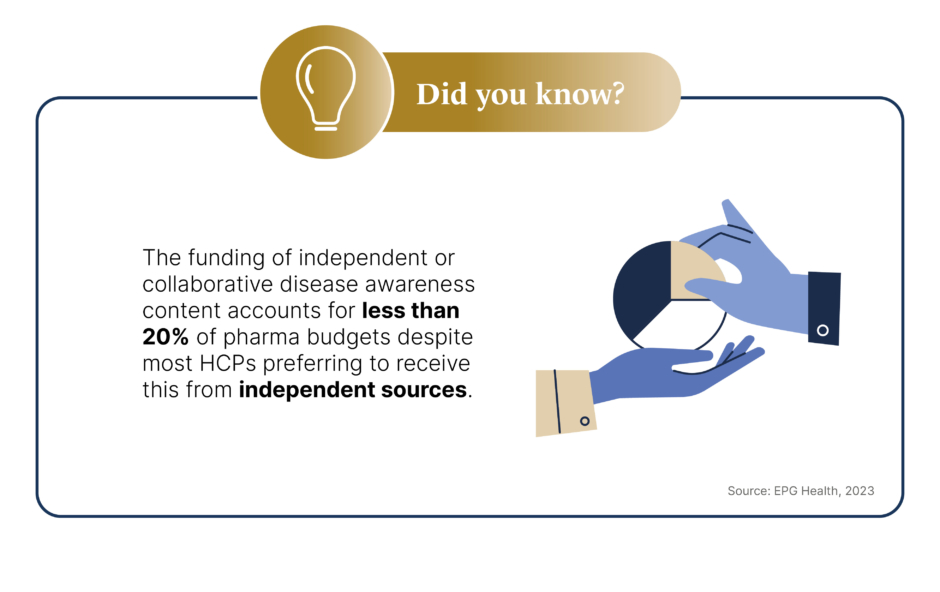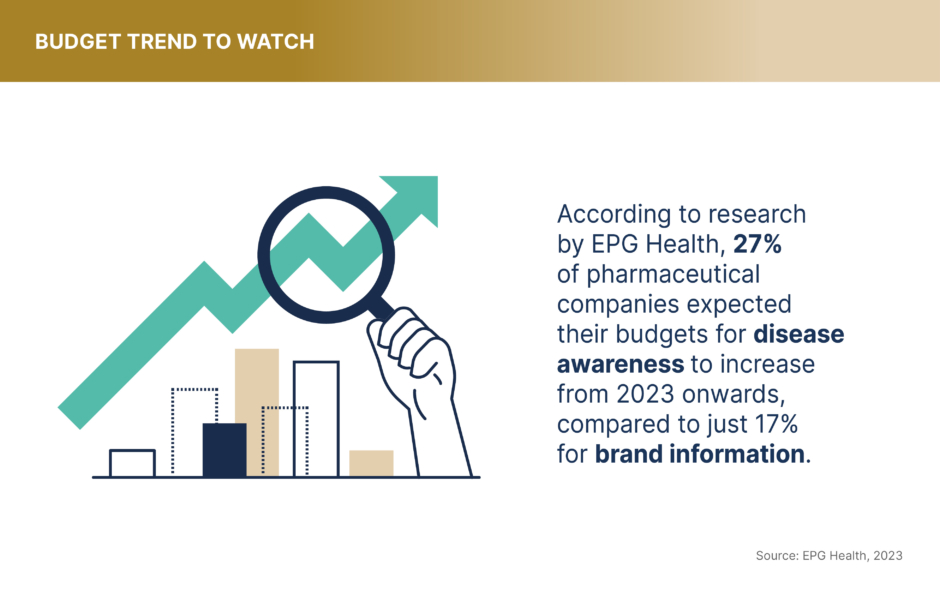When it comes to engaging healthcare professionals, pharma often finds itself standing at a crossroads: Should you lead with disease awareness or product-focused content?
It’s tempting to seek a definitive answer – something tidy and universal. But the reality is far more nuanced as both content types have their place. Each offers distinct advantages and come with its own frictions. And as with most things in life sciences marketing, context is everything.
So how do you know when to lead with what?
Timing is key
To answer this, it helps to consider how healthcare professionals themselves engage with content at different stages of their journey.
“I always appreciate receiving broader background information about a disease first,” says Dr Azmain Chowdhury, a medical doctor in the UK’s NHS. “It goes back to the question, ‘Why should I care?’ If I’m given some idea of the prevalence, risk factors and clinical implications – in other words, why it’s relevant for the patients I’m taking care of – I’ll be much more receptive to product-specific data.”
The need to understand the broader disease landscape to then evaluate specific treatments is key to effective engagement. Context builds relevance – making product information not just useful, but meaningful: “Disease awareness campaigns truly drive home why we should care,” Dr Chowdhury adds.
What do HCPs actually engage with?
The data also tells a clear story: HCPs crave substance over sales pitches. “Surveys show 60–80% prefer educational to promotional material, and 80% value independent, credible sources over pharma channels,” comments Bora Erdemli, Principal, ZS, in a recent EMJ GOLD roundtable. “Yet pharma often leads with brand-centric messaging, which HCPs largely tune out.”
This preference for meaningful, educational content isn’t just theoretical – it’s reflected in real-world campaigns that have shaped clinical practice and saved lives. “The phrase ‘Sepsis Six’ is drilled into us from medical school, and it’s saved countless lives – and that’s all thanks to the amazing work of the Surviving Sepsis Campaign,” reflects Chowdhury.
“I think it’s an incredible example of how a coordinated international campaign has led to dramatic improvements in sepsis recognition and treatment, and patient survival. Not drug-centric, but patient-centric,” he adds. Campaigns like these don’t just inform but build trust and open the door to more meaningful learning and clinical conversations.

Injecting flair into product campaigns
Disease awareness may feel safer and more welcome, but it often lacks clinical punch. Product content, on the other hand, drives action – yet faces tougher regulatory scrutiny. Still, that doesn’t mean it has to lack personality or creative impact.
Khalid Latif, Global Executive Creative Director EU Hub, VML Health, and judge at Cannes Lions in the pharma category, shares how creative bravery can elevate even the most restricted product-focused campaigns. “We need to change the way we approach them, not just the way we execute them. Start with the human truth, not just the clinical benefit,” he recommends. “Whether it’s fear, frustration, hope, or even humour, people respond to emotion. Begin with what your audience feels then anchor it with the science.”
Emotional insight isn’t separate from clinical value, it’s what gives it meaning. Teams shouldn’t be afraid to lean on the power of emotion when planning out their product-based campaigns – it could be what sets them apart from competitors. “Use constraints as creative fuel. The best work often comes because of constraints, not despite them,” continues Latif. “Let’s use regulatory guardrails as a brief, not a barrier.”
Natxo Diaz, Global Head of Craft, VML Health, agrees, adding: “A successful campaign must not only resonate emotionally but also drive measurable impact – whether that’s through behaviour change, increased awareness or tangible improvements in health outcomes.”
Pharma shouldn’t be afraid to bring product content to life with flair, empathy and strategy. So, get creative with the content, but remember that impact is what matters.

Prioritising with purpose
Ultimately, and unfortunately, there’s no one-size-fits-all blueprint. The best strategies blend both approaches, guided by audience insight, clinical impact and business goals.
Disease awareness content is designed to be educational and works best early in the brand journey, especially pre-launch or in new markets. Whereas product content, by contrast, is crucial later in the decision-making process when HCPs are comparing treatments.
So if you want to raise awareness in a crowded therapy area, disease-led content might be your way in. If you’re trying to drive a prescribing decision in a mature market, then product clarity could be your best ally. The key is knowing when to lead with what – and why.
It’s not about choosing sides, but choosing the right moment. By aligning content with clinical need, emotional context and creativity, pharma can build trust, drive better value and, crucially, improve outcomes.
After all, as Mel Routhier, Global Chief Creative Officer Health & Wellness, VML, concludes, powerful storytelling helps pharma deliver on “the most important KPI of all – changing human lives for the better”.









